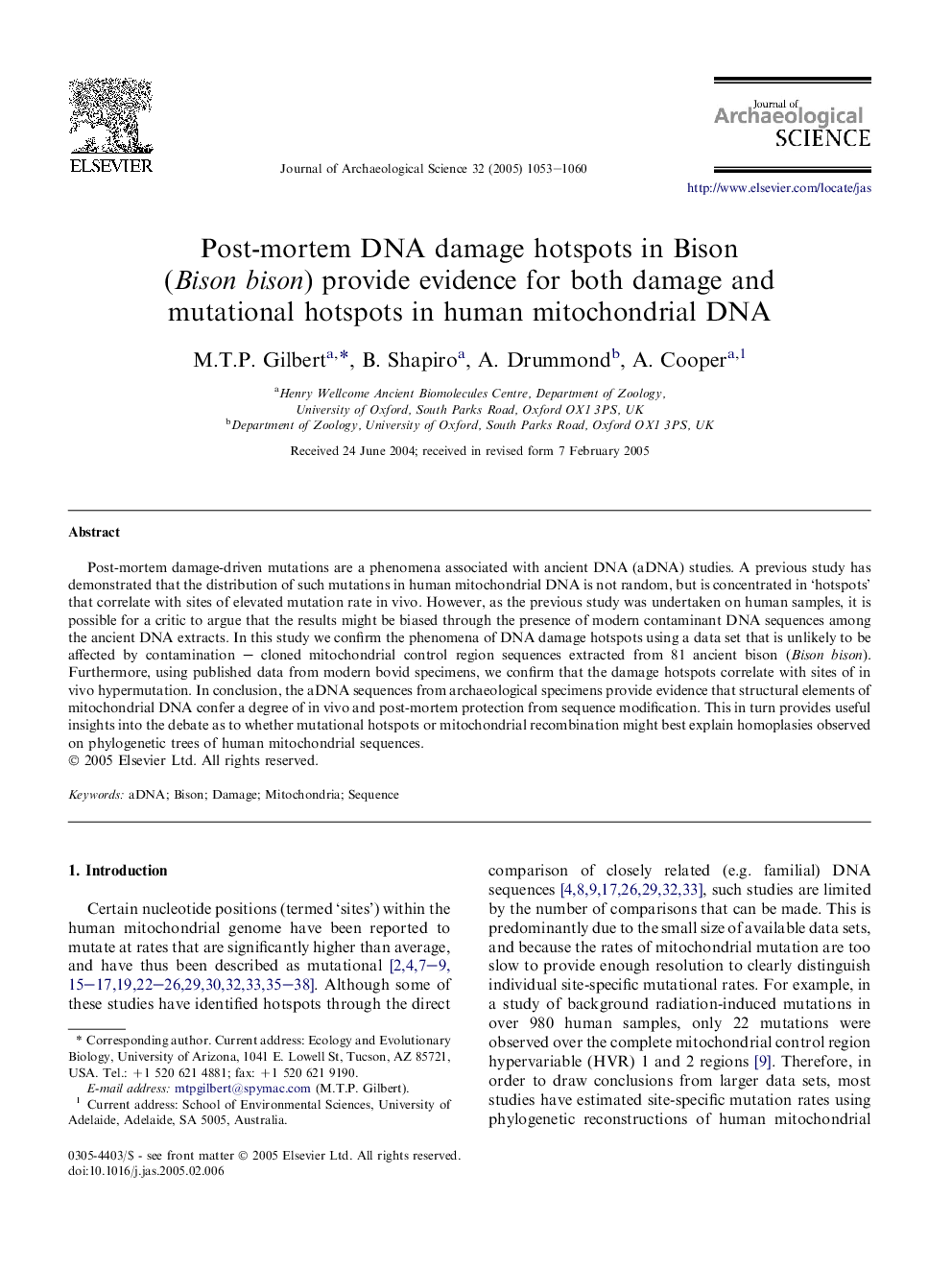| Article ID | Journal | Published Year | Pages | File Type |
|---|---|---|---|---|
| 10499444 | Journal of Archaeological Science | 2005 | 8 Pages |
Abstract
Post-mortem damage-driven mutations are a phenomena associated with ancient DNA (aDNA) studies. A previous study has demonstrated that the distribution of such mutations in human mitochondrial DNA is not random, but is concentrated in 'hotspots' that correlate with sites of elevated mutation rate in vivo. However, as the previous study was undertaken on human samples, it is possible for a critic to argue that the results might be biased through the presence of modern contaminant DNA sequences among the ancient DNA extracts. In this study we confirm the phenomena of DNA damage hotspots using a data set that is unlikely to be affected by contamination - cloned mitochondrial control region sequences extracted from 81 ancient bison (Bison bison). Furthermore, using published data from modern bovid specimens, we confirm that the damage hotspots correlate with sites of in vivo hypermutation. In conclusion, the aDNA sequences from archaeological specimens provide evidence that structural elements of mitochondrial DNA confer a degree of in vivo and post-mortem protection from sequence modification. This in turn provides useful insights into the debate as to whether mutational hotspots or mitochondrial recombination might best explain homoplasies observed on phylogenetic trees of human mitochondrial sequences.
Keywords
Related Topics
Physical Sciences and Engineering
Materials Science
Materials Science (General)
Authors
M.T.P. Gilbert, B. Shapiro, A. Drummond, A. Cooper,
